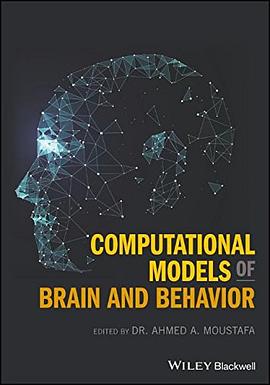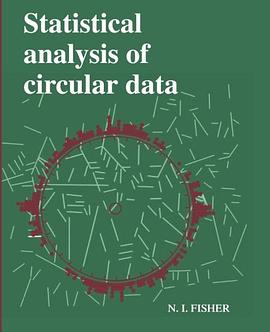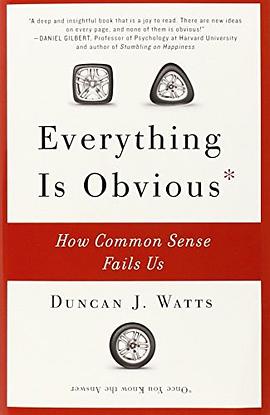

具體描述
A comprehensive Introduction to the world of brain and behavior computational models
This book provides a broad collection of articles covering different aspects of computational modeling efforts in psychology and neuroscience. Specifically, it discusses models that span different brain regions (hippocampus, amygdala, basal ganglia, visual cortex), different species (humans, rats, fruit flies), and different modeling methods (neural network, Bayesian, reinforcement learning, data fitting, and Hodgkin-Huxley models, among others).
Computational Models of Brain and Behavior is divided into four sections: (a) Models of brain disorders; (b) Neural models of behavioral processes; (c) Models of neural processes, brain regions and neurotransmitters, and (d) Neural modeling approaches. It provides in-depth coverage of models of psychiatric disorders, including depression, posttraumatic stress disorder (PTSD), schizophrenia, and dyslexia; models of neurological disorders, including Alzheimer’s disease, Parkinson’s disease, and epilepsy; early sensory and perceptual processes; models of olfaction; higher/systems level models and low-level models; Pavlovian and instrumental conditioning; linking information theory to neurobiology; and more.
Covers computational approximations to intellectual disability in down syndrome
Discusses computational models of pharmacological and immunological treatment in Alzheimer's disease
Examines neural circuit models of serotonergic system (from microcircuits to cognition)
Educates on information theory, memory, prediction, and timing in associative learning
Computational Models of Brain and Behavior is written for advanced undergraduate, Master's and PhD-level students—as well as researchers involved in computational neuroscience modeling research.
著者簡介
DR. AHMED A. MOUSTAFA, PhD is a Senior Lecturer in Cognitive and Behavioral Neuroscience at the MARCS Institute for Brain, Behavior, and Development, School of Social Sciences and Psychology, Western Sydney University. He has published more than 100 papers in high-ranking journals including Science, Proceedings of the National Academy of Science, Journal of Neuroscience, and Brain, Neuroscience and Biobehavioral Reviews.
圖書目錄
Introduction xxi
Part I Models of Brain Disorders 1
1 A Computational Model of Dyslexics’ Perceptual Difficulties as Impaired Inference of Sound Statistics 3
Sagi Jaffe-Dax, Ofri Raviv, Yonatan Loewenstein, and Merav Ahissar
2 Computational Approximations to Intellectual Disability in Down Syndrome 15
Ángel E. Tovar, Ahmed A. Moustafa, and Natalia Arias-Trejo
3 Computational Psychiatry 29
Robb B. Rutledge and Rick A. Adams
4 Computational Models of Post-traumatic Stress Disorder (PTSD) 43
Milen L. Radell, Catherine E. Myers, Jony Sheynin, and Ahmed A. Moustafa
5 Reward Processing in Depression 57
The Computational Approach
Chong Chen and Taiki Takahashi
6 Neurocomputational Models of Schizophrenia 73
Ahmed A. Moustafa, B³a¿ej Misiak, and Dorota Frydecka
7 Oscillatory Dynamics of Brain Microcircuits 85
Modeling Perspectives and Neurological Disease Considerations
Frances K. Skinner and Alexandra Pierri Chatzikalymniou
8 Computational Models of Pharmacological and Immunological Treatment in Alzheimer’s Disease 99
Vassilis Cutsuridis and Ahmed A. Moustafa
9 Modeling Deep Brain Stimulation for Parkinson’s Disease 109
Volume Conductor, Network, and Mean-Field Models
Madeleine M. Lowery
10 The Development of Medications for Parkinson’s Disease Using Computational Modeling 125
Mubashir Hassan and Ahmed A. Moustafa
11 Multiscale Computer Modeling of Epilepsy 139
M. Sanjay, Samuel A. Neymotin, Srinivasa B. Krothapalli, and William W. Lytton
Part II Neural Models of Behavioral Processes 151
12 Simple Models of Sensory Information Processing 153
Danke Zhang, Malte J. Rasch, and Si Wu
13 Motion Detection 171
An Artificial Recurrent Neural Network Approach
Jeroen Joukes and Bart Krekelberg
14 Computation in the Olfactory System 185
Christiane Linster
15 Computational Models of Olfaction in Fruit Flies 199
Ankur Gupta, Faramarz Faghihi, and Ahmed A. Moustafa
16 Multisensory Integration 215
How the Brain Combines Information Across the Senses
Ryan L. Miller and Benjamin A. Rowland
17 Computational Models in Social Neuroscience 229
Jin Hyun Cheong, Eshin Jolly, Sunhae Sul, and Luke J. Chang
18 Sleep is For the Brain 245
Contemporary Computational Approaches in the Study of Sleep and Memory and a Novel “Temporal Scaffolding” Hypothesis
Itamar Lerner
19 Models of Neural Homeostasis 257
Hazem Toutounji
Part III Models of Brain Regions and Neurotransmitters 271
20 Striatum 273
Structure, Dynamics, and Function
Jyotika Bahuguna and Arvind Kumar
21 Amygdala Models 285
Vinay Guntu, Feng Feng, Adel Alturki, Ajay Nair, Pranit Samarth, and Satish S. Nair
22 Cerebellum and its Disorders 303
A Review of Perspectives from Computational Neuroscience
Shyam Diwakar and Ahmed A. Moustafa
23 Models of Dynamical Synapses and Cortical Development 321
Radwa Khalil, Marie Z. Moftah, Marc Landry, and Ahmed A. Moustafa
24 Computational Models of Memory Formation in
Healthy and Diseased Microcircuits of the Hippocampus 333
Vassilis Cutsuridis
25 Episodic Memory and the Hippocampus 345
Naoyuki Sato
26 How Do We Navigate Our Way to Places? 357
Developing a New Model to Study Place Field Formation in Hippocampus Including the Role of Astrocytes
Fariba Bahrami and Shiva Farashahi
27 Models of Neuromodulation 373
Michael C. Avery and Jeffrey L. Krichmar
28 Neural Circuit Models of the Serotonergic System 389
From Microcircuits to Cognition
Pragathi Priyadharsini Balasubramani, V. Srinivasa Chakravarthy, KongFatt Wong-Lin, Da-Hui Wang, Jeremiah Y. Cohen, Kae Nakamura, and Ahmed A. Moustafa
Part IV Neural Modeling Approaches 401
29 A Behavioral Framework for Information Representation in the Brain 403
Frédéric Alexandre
30 Probing Human Brain Function with Artificial Neural Networks 413
Umut Güçlü and Marcel van Gerven
31 Large-scale Computational Models of Ongoing Brain Activity 425
Tristan T. Nakagawa, Mohit H. Adhikari, and Gustavo Deco
32 Optimizing Electrical Stimulation for Closed-loop Control of Neural Ensembles 439
A Review of Algorithms and Applications
Seif Eldawlatly
33 Complex Probabilistic Inference 453
From Cognition to Neural Computation
Samuel J. Gershman and Jeffrey M. Beck
34 A Flexible and Efficient Hierarchical Bayesian Approach to the Exploration of Individual Differences in Cognitive-model-based Neuroscience 467
Alexander Ly, Udo Boehm, Andrew Heathcote, Brandon M. Turner, Birte Forstmann, Maarten Marsman, and Dora Matzke
35 Information Theory, Memory, Prediction, and Timing in Associative Learning 481
Jason T. Wilkes and C. R. Gallistel
36 The Utility of Phase Models in Studying Neural Synchronization 493
Youngmin Park, Stewart A. Heitmann, and G. Bard Ermentrout
37 Phase Oscillator Network Models of Brain Dynamics 505
Carlo R. Laing
38 The Neuronal Signal and Its Models 519
Igor Palmieri, Luiz H. A. Monteiro, and Maria D. Miranda
39 History Dependent Neuronal Activity Modeled with Fractional Order Dynamics 531
Seth H. Weinberg and Fidel Santamaria
Index 549
· · · · · · (收起)
讀後感
評分
評分
評分
評分
用戶評價
相關圖書
本站所有內容均為互聯網搜索引擎提供的公開搜索信息,本站不存儲任何數據與內容,任何內容與數據均與本站無關,如有需要請聯繫相關搜索引擎包括但不限於百度,google,bing,sogou 等
© 2025 book.quotespace.org All Rights Reserved. 小美書屋 版权所有




















